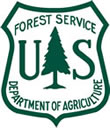Herpetofauna Response to Oak Regeneration Silvicultural Treatments
Largely due to the cessation of human caused disturbance in the twentieth century, oak species in the Southern Appalachians have experienced widespread regeneration failure. Oak species are slow to mature and require a great amount of sunlight while growing into maturity. Many species rely either directly or indirectly on oaks due to their acorn (mast) production. With the loss of American Chestnut to blight, oak is now considered a keystone species in the Southern Appalachian ecosystem.
This study is the second phase that will examine the longer term effects that three types of silviculture treatments designed for oak regeneration have on small mammals and herpetofauna (reptiles and amphibians) that dwell in this ecosystem. The first treatment, implemented in 2009-10 and scheduled to be repeated in 2013-14, was a prescribed burning to eradicate fire-sensitive species that compete with new oak growth. The second treatment was an herbicide removal of most of the midstory trees in 2008. The goal of this is to increase light on the forest floor. The third treatment was a reduction of the overstory to 30 to 40 percent of the original basal area in 2010 followed by a prescribed fire in 2013-14. The goal of this treatment is to let in great amounts of sunlight while also removing competing fire sensitive species. Each treatment consists of five hectare plots with four replicates of each treatment. Control plots were also implemented for this study.
In 2013 and 2014, the second phase of surveying small mammal and herpetofauna populations will take place. Animals are live caught in pitfall and funnel traps, identified, recorded, and released. This data will be analyzed for species abundance before and after treatment, changes in physiological condition, and age and sex measures of populations. The first phase of studying the effects on small mammals and herpetofauna took place in 2008, 2010, and 2011.










